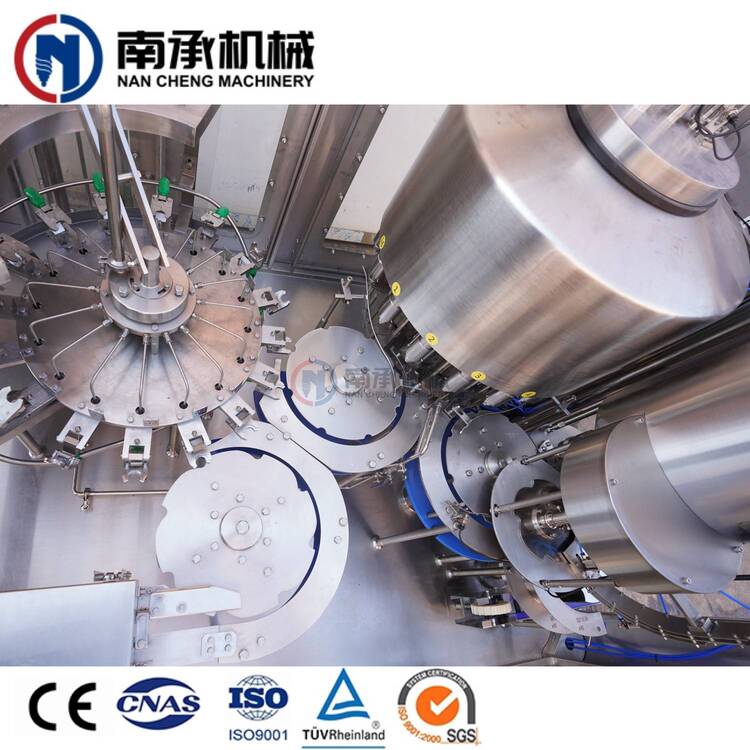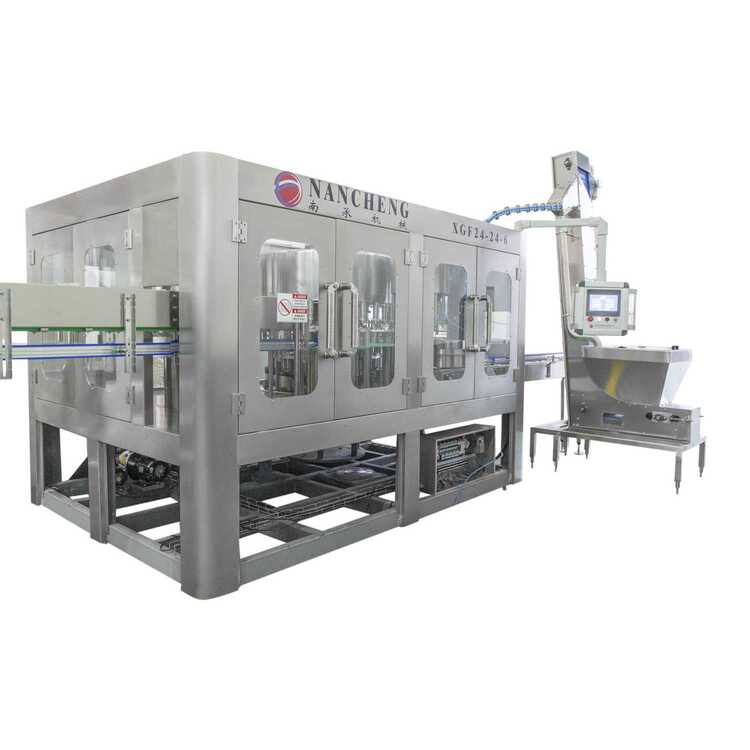Call us : +86-13601566060
+86-13921994358
Send us an Email : peter@chinancjx.com
Visit Us : 9 Tongxin Road, Leyu town, Zhangjiagang City, Jiangsu Province, China
![]() WhatsApp: +86-13921994358, +86-13601566060
WhatsApp: +86-13921994358, +86-13601566060
In the water manufacturing sector, the water filling line is a crucial setup. It is the engine that drives the generation of water.
Torn labels, poor capping, sealing, denting, and breakage—particularly in lightweight products—have often been the results of increasing line speed as a result of pressure on bottlers to produce more water for less money.
Aside from this, another challenge is getting a high-quality and durable water filling line but you need not worry.
Just partner with a reputable, experienced and trustworthy water filling line manufacturer to give you the best services.
Filling operations can discover gaps and trouble areas to increase productivity and reduce downtime by knowing, measuring, and finding the following forces on the line.
I. Pressure
II. Impact
III. Vertical Load

Conveyors under heavy pressure may compact containers, causing expensive cosmetic damage including label shredding and crush damage.
By compacting containers, pressure and related mechanical factors like spin, tilt, and friction induce scuffing and abrasion damage.
The container may sustain damage ranging from label tearing and decorative loss to major collapse and UPC loss.
The effects of high pressure extend beyond the container. On all types of filling lines, sustained pressure increases the cost of maintenance, the frequency of downtime incidents, and equipment wear.
A decrease in pressure will be advantageous for all filling lines.
All filling lines experience pressure in their transportation systems; therefore a line that is appropriately balanced will perform at its best overall. No matter the type of container—glass, aluminum, or PET—packaging processes are best served by pressure monitoring and problem-solving.
Operators can prioritize upcoming maintenance activities when trends suggest an escalating issue by monitoring pressure as part of a weekly or biweekly maintenance cycle. They can take prompt action on pressure locations that are out of specification.
The impact is a particularly harmful force when processing glass containers; while breakage isn't guaranteed just because a bottle experiences a certain impact, the likelihood of breakage will rise.
Fillers can increase line productivity and lessen container damage by understanding the underlying causes of shock in production, expressed in Inches Per Second (IPS).
Simply put, a bottle's IPS rating indicates that it is certified to have a specific percentage of breakage when it is struck by a recognized mass.
Although fillers are unaware of it, IPS (Inches Per Second) measurement has long been used by glass bottle manufacturers as a strength grade.
Today, IPS are quickly emerging as a crucial measurement tool for fillers attempting to create and process a lightweight bottle design without having it physically shatter under the force of the impact it experiences on a given line.
In the real world, a container's reaction to impact is influenced by a variety of complex factors. For instance, a container experiences many impacts of varying intensities as it passes through the filling line.
Smart in-line sensors have made it possible for fillers to measure IPS dynamically on the line and utilize measuring tools like the Vidrala Impact Index to evaluate the impact performance of a line.
Over-stacked pallets cause seal failures that have an impact on the quality of the product.
Again improperly calibrated corking, capping, and sealing machines can apply excessive downward force to containers and cans that operations can't afford, leading to neck damage and breaking.
Machines used to cap and sew containers are often programmed to produce a good seal. In practice, it is challenging to gauge the force exerted on each head of the container in relation to the setting.
It's crucial to comprehend this variation in applied forces given the consequences of incorrectly calibrated heads.
The vertical force that each capper head applies to the container in real-time is measured instantly by in-line sensors. Calibration times can frequently be cut from hours to minutes via fillers.

The three unique destructive forces that affect water filling lines have been emphasized above.
However, you can purchase a strong, high-quality one designed to checkmate these pressures and minimize them to the absolute minimum.
This is something you may obtain by working with a reputable and trusted water filling line manufacturer.
You can depend on Zhangjiagang Nancheng Machinery Co., Ltd. to supply high-quality water filling lines in a timely manner and in a variety of designs.
We make goods that are not only sturdy but also long-lasting thanks to our highly technologically oriented personnel and excellently superior quality materials.
Please give us a call to place your purchases, benefit from our prompt delivery services, and experience a significant increase in output.
By continuing to use the site you agree to our privacy policy Terms and Conditions.